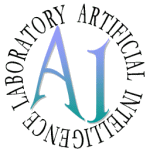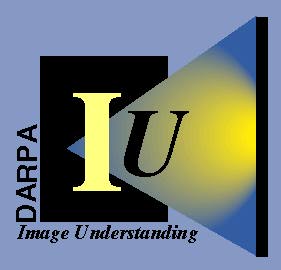|
 |
|||
TECHNICAL
OBJECTIVES
|
|
Our main objective is the integration of sensor physics and the tools of statistical analysis and modeling into Image Understanding (IU) methods and techniques. We believe that a precise analysis of sensor physics, performance and noise will lead to new models and approaches that suggest novel ways in which IU concepts need to be adapted and extended in order to make optimal use of all available data. The set of interrelated research topics that will serve as the initial focus for our research include:
|
TECHNICAL
APPROACH
|
Our approach involves a careful integration of sensor physics, statistical analysis and modeling, and IU methods. In particular, we plan to take the following approach to each of the interrelated topics. |
|
|---|
|
One of our major successes to date under the current ATR-URI project is in developing multiresolution stochastic models for SAR imagery that accurately capture the scale-to-scale statistical variability of speckle in SAR imagery. In one application, we used models for natural clutter and for man-made objects together with our fast statistical likelihood calculation methods to develop an enhanced discrimination feature that, when integrated into Lincoln Labs' ATR algorithm and tested on a very large data set, resulted in a factor of 6 reduction in false alarms over the previous best results. In the second application, we used our models to segment natural clutter (trees and grass) and to enhance anomalous pixels (due to man-made scatterers) that did not produce the scale-to-scale variability consistent with natural clutter. The results are very accurate segmentations and enhanced visibility of anomalies as compared to widely used CFAR methods. We believe there are many additional applications for these multiscale models. For example, anomalies that result from man-made objects exhibit themselves as distinctive patterns across scale that differ significantly from the scale-to-scale textural variations. Consequently, chains of pixels across scale could in principle be viewed as robust and statistically meaningful features that can be further exploited for model-based recognition. We propose to use multiscale features for higher level recognition and reasoning. Classically, target models include geometrical constraints on the appearance of features in space. In this new framework, models will also include information about the appearance of features across scale. The development of such models is a central objective of this project. Once we have such models, we can use our statistically optimal methods for evaluating likelihoods to evaluate match scores for hypothesized models and poses. |
|
|---|
|
A widely recognized fact in the ATR community is that the scattering patterns for man-made scatterers possess very different characteristics from those of natural scatterers. In particular, while the latter frequently can be modeled as diffuse isotropic scatterers, the former frequently have strong specular characteristics, which implies that they have extremely strong aspect-dependent responses. This effect is even more pronounced in low-frequency SAR as is used for foliage penetration. While some work has attempted to account for the difference in scatterer type, it is fair to say that a fundamental look at this problem has yet to be taken. In some very recent research Prof. Shapiro has begun to do this. His analysis indicates that there is significant discriminating information to be obtained if one examines sets of SAR images of a scene constructed using different subapertures of the full SAR aperture. What this suggests is that the natural data structure for higher-level ATR functions will again involve imagery at different resolutions, but that in this case the focus is on exploiting differences in imagery obtained from different parts of the aperture (and hence from different viewing angles). Note that this results in a very novel pose estimation problem: the model of a specular reflector must capture the fact that changes in pose not only change the relative geometry of features but also can change the appearance of these features in imagery from different apertures. As a result, the action of the pose transformation group on a set of images from different apertures and at different resolutions is not simply a geometric transformation. |
SCHEDULED
DEMONSTRATIONS
|
We are still working out the details of the demonstrations, which will include:
|
CURRENT
PROJECTS
DETECTION
AND
CLASSIFICATION

|
Slides from a talk outlining the Flexible Histogram method of modeling images. Flexible Histograms capture the texture characteristics within images, using an image representation which measures the joint occurrence of features across spatial resolutions. An image classification system was designed using a similarity metric based on the likelihood that the distribution derived from one image could have generated another. Classification of natural textures indicates a high level of specificity, and recent results on target detection in SAR imagery are encouraging. Jeremy S. De Bonet ( jsd@ai.mit.edu) |
SEGMENTATION

|
A texture driven segmentation built upon the flexible histograms texture matching technique developed in his master's thesis. Examples include segmentation of target vehicles in synthetic aperature radar (SAR), and anatomical structures from magnetic resonance imagery (MRI) Jeremy S. De Bonet ( jsd@ai.mit.edu) |
|
Toward Automatic Segmentation of SAR Images In many recognition and classification applications, fast segmentation performed at the pre-processing stage can save a lot of time by clipping out the areas where there could be no objects present. When applied to the SAR domain, segmentation can save not only processing time, but also transmission time and resources. Only the parts of the image that can potentially contain objects of interest are transmitted from a platform to a processing center. Polina Golland, Paul Viola ( polina@ai.mit.edu) |

|
REGISTRATION

|
Structure Driven Image Regisration Because of its ability to provide a representation which is generally robust to the speckle in synthetic aperatiure radar (SAR) imagery, the flexible histograms texture matching technique developed in his master's thesis can be used as core matching metric for a SAR image registration system. While working on this project during the summer of 1997 at MIT and Alphatech, Inc. he developed such a system. Jeremy S. De Bonet ( jsd@ai.mit.edu) |
RECENT
PUBLICATIONS
|
Abstracts of current research projects supported under this grant.
Other projects at the MIT AI lab which are related to the goals of this grant. |
QUARTERLY
REPORTS
BRIEFINGS
|
 |

